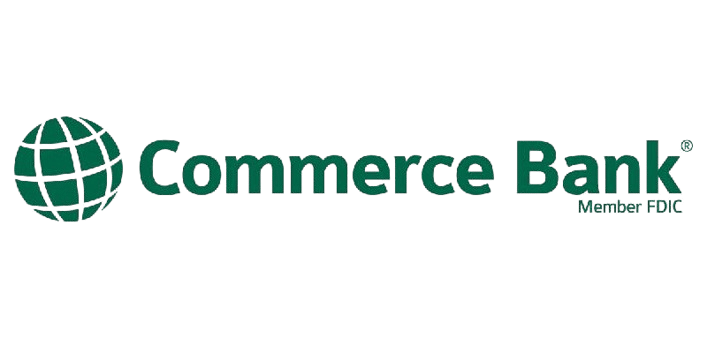
ARTICLE
Designing a successful digital-only banking proposition
Exploring the potential of ‘direct’ banking, from driving deposit growth to staying ahead in the CX arena
It hasn’t been an easy year for banks, or their customers. Rampant inflation and rising interest rates are weighing on economic growth, geopolitical tensions have spilled into war in several regions and liquidity woes, crypto-scandals and bank failures have added to a sense of financial unease. Despite this, many banks head into 2024 having enjoyed an 18-month period that, according to analysts at McKinsey, has “been the best period for global banking overall since at least 2007”1 as the hike in interest rates that has made life so challenging for consumers has boosted banking profits.
But what comes next? The McKinsey team think the industry is on the cusp of what it calls the “Great Banking Transition” with balance sheets now challenged by the shift of assets to nontraditional institutions and to parts of the market that are capital-light and often differently regulated, such as digital payments specialists and alternative asset management firms.
Analysts at Deloitte2 tend to agree that balance sheets will face new challenges. Their Banking Industry Outlook notes that banks’ ability to generate income and manage costs will be tested in new ways in 2024 as a result of a global slowdown and disruptive forces such as higher interest rates, reduced money supply, more assertive regulations, climate change, and geopolitical tensions. “Banks, in general, are on sound footing, but revenue models will be tested,” said the Deloitte team. “Organic growth will be modest, forcing institutions to pursue new sources of value in a capital-scarce environment.”
Against this backdrop, how do incumbent banks navigate a landscape of shifting value chains to futureproof their businesses? It sounds obvious but a good first step is to play catch-up with other industries when it comes to offering slick, seamless and secure online experiences that not only delight customers but make their lives easier.
“Customer expectations have been completely reshaped by their experiences of food apps, Uber and Amazon,” says Hashim Toussaint, General Manager of Digital Solutions at FIS. “Banks have never been good at this end-to-end user experience, but new entrants have taken these lessons and made it super simple and easy for users to navigate what can be an intimidating process.”
Kriti Anand, Vice President of Commercial Digital Product Management and Innovation at Commerce Bank, points out that banking innovation in North America has “been kind of slow” but the pandemic acted as an accelerant because it normalised digital interactions in all areas of life. “Covid-19 increased the demand of anytime, everywhere banking,” says Anand. “Whether sitting in Starbucks or travelling, people expect to have everything on their phone.”
As customer expectations have outpaced banks’ capabilities, this digital deficit has created opportunities for an array of new entrants, such as neobanks, e-wallets and BigTech. The digital-first new entrants may still only have a small share of the customer wallet compared to the big banks but they have been able to leverage smart branding and slick UX to redefine different parts of the banking value chain, from payments to savings to loans. Over time, this unravelling of traditional value chains will represent a clear and present danger to the incumbents – and the time to fight back is now, says Toussaint.
“Good UX has become a credibility issue.”
Hashim Toussaint, FIS
“The time is now,” he says, saying an amazing user experience is now more important than having all the capabilities. “If the UX looks and feels good, then customers assume the rest is good enough because the provider has taken the time to understand their needs and make their life easier. If you don’t care enough to put that effort in, then why should a customer trust you to be around in ten years’ time? It’s become a credibility issue.”
This matters more than ever now that the traditional dimensions that banks have competed on, such as products and interest rates, have become highly commoditised.
“We are all offering rates within the same ballpark so increasingly the Customer’s experience becomes the product we are selling”
Meghan Greeley, M&T Bank
“We are all offering rates within the same ballpark so increasingly the Customer’s experience becomes the product we are selling”, says Meghan Greeley, Executive Vice President of Customer Experience at M&T Bank. “It’s the CX that creates stickiness, trust and opportunity.”
This is particularly important as Gen Z and Gen Alpha mature as customers. “If we do not move fast enough, we are going to lose these people who have grown up with one-click Amazon-like experiences,” says Kriti Anand of Commerce Bank. “We need to capture these people as they are growing up.”
Legacy: it’s not all bad
Legacy systems carry the blame for the incumbents’ digital deficit but legacy-bashing ignores the many positives of having stable and secure core systems. “These systems are hardened over decades and it’s hard to replicate that,” says Hashim Toussaint of FIS, pointing out that once apparently intractable legacy issues can now be resolved by the application of new technology solutions, such as cloud computing and APIs.
But not all legacy issues are so easy to solve. “We can build around core legacy systems using wrap around APIs but it’s much harder to shake off legacy thinking,” he says.
Getting a century-old financial institution to emulate a digitalfirst start-up is clearly a big ask but it’s essential if incumbents are to compete at speed.
“Banks need to think about how they align their teams internally,” says Hashim Toussaint of FIS. “It’s about bringing together multi-disciplinary teams that are focused on intimately understanding customer journeys so they can understand every process, identify every pain point and then obsess about making it better.”
This devolution of decision-making in the value stream is essential to work smarter and faster but it often stumbles and can be a big ask for risk-averse institutions. One solution is to embed a risk and compliance person in the team from the beginning, so they are part of the solution rather than being presented with a nearly finished product for them to find fault with at the end of the process.
This kind of operational reset is key if banks are to attract the best talent to deliver the dash-for-digital. “To get this talent in the door, we need to think beyond banking and speak to purpose, outcomes and making a difference in the real world,” says Hashim Toussaint of FIS.
Going direct
The frustrations of trying to keep pace with digital front-runners when your feet are mired in decades-old mainframe systems are among the reasons why some incumbents are deciding to launch their own direct bank offer. Success stories in North America include Jenius Bank, part of the SMBC Group, and Ally Bank, part of Ally Financial, a former General Motors company. In the UK, JP Morgan’s digital spin-off Chase has been building its customer base faster than expected in a crowded market, encouraging further expansion into mainland Europe.
Launching a direct bank is a chance for incumbents to start again with a blank piece of paper and design a bank from scratch, using best-in-class digital solutions but drawing on the know-how and financial resources of a legacy bank. It’s an opportunity to refresh the brand, draw in new customers and act as a feeder for the legacy bank.
“Mobile banking is table stakes now if you want to stay in the game”
Rick Foresta, FIS
Rick Foresta SVP, General Manager Modern Banking Platform of FIS says launching a direct bank is a way for incumbents to rapidly level up their CX to match best-inclass digital rivals. “If you are not growing opportunities for customers to bank on their phones, then you’re not going to be competitive,” he says. “Mobile banking is table stakes now if you want to stay in the game.”
Direct banking allows incumbents to hurdle legacy roadblocks so they can keep pace with how customers want to bank. But it also satisfies deeper operational requirements, enabling incumbents to reach new customers unconstrained by geography. “It’s possible to build deposits very rapidly,” says Foresta.
“The potential is huge”
Kriti Anand, Commerce Bank
And it’s not just pulling in new savers but about creating smart solutions for existing customers to start saving by offering easyuse budgeting and saving tools. “The potential is huge,” says Kriti Anand of Commerce Bank. “With lower operating costs, digital-only banks can offer more competitive interest rates to attract new savers but they can also offer more personalised customer experience and incentives to drive deposit growth.”
Compared to trying to get innovation over the line in an incumbent bank, the speed of time-to-launch for a direct bank can be breathtaking. “The market moves fast and that risk averse stance will be the downfall of some banks,” says Hashim Toussaint of FIS. “Banks should be prepared to push the envelope.”
Rick Foresta of FIS says the key to moving at speed is to focus on simplicity. “The complexity you can add in with transaction accounts can be overwhelming and it overburdens things and slows your speed to market,” he says. “Focus on your MVP that’s aligned with your business objectives, and then push to get your products and services out there.”
Customer-first, by design
This is going to require a laser-like focus on the customer. Which market segment are you going after? What are their pain points and unmet needs? How can you solve those and add value to their life?
“You have to be really clear on the value proposition,” says Meghan Greeley of M&T Bank. “Banking is hugely competitive space so look for where there’s a customer that’s underserved and meet that customer’s needs. Keep that at the centre of your mindset.”
Indeed, she says it’s important not to innovate for the sake of innovation but to make sure there’s a clear business purpose aligned with the bank’s longer-term strategic goals. “There’s a lot of cost pressures on banks that have to be weighed against investment in these new direct ventures,” says Greeley. “You have to ask hard questions about why you’re doing this and the learning curve it’s going to involve.”
“Banking is highly competitive, whether you are new or been around for 100 years,” she added. “But we are all stretching and challenging each other, and that’s good news for the customer because it unlocks new value for them.”

Rick Foresta
SVP, General Manager Modern Banking Platform
FIS

Hashim Toussaint
SVP, General Manager Digital Solutions
FIS

Kriti Anand
VP Commercial Digital Products & Innovation
Commerce Bank

Meghan Greeley
Executive Vice President of Customer Experience
M&T Bank

MoneyLIVE is your one-stop shop for all the latest banking and financial services content from across the world. With a huge portfolio of conferences, webinars, executive roundtables and reports to choose from, MoneyLIVE provides our community with relevant and future-facing information.
Visit the website: https://moneylive-insights.com/

FIS is a leading provider of technology solutions for financial institutions and businesses of all sizes and across any industry globally. We enable the movement of commerce by unlocking the financial technology that powers the world’s economy. Our employees are dedicated to advancing the way the world pays, banks and invests through our trusted innovation, absolute performance and flexible architecture. We help our clients use technology in innovative ways to solve business-critical challenges and deliver superior experiences for their customers. Headquartered in Jacksonville, Florida, FIS
ranks #241 on the 2021 Fortune 500 and is a member of Standard & Poor’s 500® Index.
To learn more, visit fisglobal.com
Stay in the loop with MoneyLIVE
Subscribe to our newsletter to receive news, insights and special offers.
By submitting this form you agree to our Privacy & Cookies Policy and Terms & Conditions